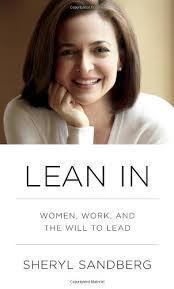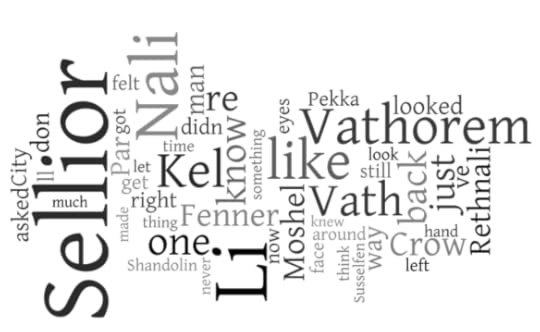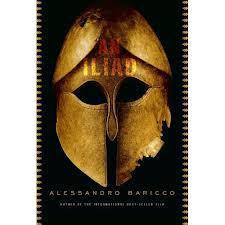B.R. Sanders's Blog, page 35
July 11, 2014
Book Review: PERDIDO STREET STATION
I have been meaning to read China Mieville’s PERDIDO STREET STATION for years, now. It was the first book of Mieville’s to catch my eye, though I only vaguely knew it was supposed to be very strange and somehow involve wings. I ended up reading his later stuff first, and have only now worked my way back to this.
It is a marvelous book, but it is clearly written by a younger and not quite as sure-footed writer than the man who produced EMBASSYTOWN. It is a grand, sprawling creation. It is a giddy, horrifying, sweet, philosophical wonder of a book. And it is overwritten, clunky, confusing and oddly paced.
The story takes place in New Crobuzon, a bizarre city in the world of Bas-Lag built around the partial skeleton of a monstrously huge unknown creature. The city attracts all kinds, from a beetle-headed rebellious artist to a washout brilliant scientist to a wounded and broken refugee seeking a miracle. Mieville delights in the nastiness of the city—this is a deliriously gross book in a peculiarly poetic way.
Like most of Mieville’s work, this book is a philosophy told through narrative. His books are ultimately always more about the abstract concepts they grapple with than the characters who populate them. A main thematic focus of the book is transition and inspiration, how one begets the other over and over in a cycle. It comes up in the book in a hundred different ways. The other major theme is consciousness. The two are linked here, likely informed by Mieville’s politics: the ways in which thought and sapience transmute and transform the material world seems to have clear roots in Marxist dialectic thought.
The world of Bas-Lag is rich with sapience: there are humans, but there are also khepri and vodyanoi and garuda and wyrmen and a mention of vampirs and the horrific handlingers. That’s not even everyone. There are the Weavers: a race of multidimensional spiders whose ways of thinking are so far removed from our own as to be uninterpretable. And there is the Construct Council. Magic (here called thaumaturgy) and science bleed together to make possible the Remade: individuals whose bodies have been drastically and often grotesquely reshaped. The book is, in a word, colorful. And the plot comes to hinge on all these differences and all these paradoxes.
The plot is initially somewhat thin, but the richness and breadth of the worldbuilding is enough to hold interest. By the time the plot truly gets going the book builds momentum like nobody’s business. The last quarter of the book has some of the most urgent and affecting plot construction I’ve ever read—it’s truly shocking, and it’s deft enough to dredge up a hundred different responses page to page. The ending is haunting.
That said, the book could have been condensed. There are plot lines that go not quite far enough, that aren’t embedded gracefully enough, threads that could be pulled without damaging the richness of the tapestry Mieville weaves. This is a case of too much book: one where the focus feels occasionally spread too thin, where the hopping around from character to character can be frantic and disorienting instead suspenseful or revelatory. It’s a wonderful, lively book that is a hair too shaggy.


June 24, 2014
Transistor Radio #3: On Not “Leaning In”
I confess I did not come to Sheryl Sandberg’s LEAN IN with the best intentions. I did not come to it in good faith. I had, in fact, been actively avoiding it since it came out a little over a year ago. When my best friend invited me (remotely) to participate in her “lean in” group, I declined. Because of all this, I don’t think it’s really fair for me to review it per se. So, this isn’t really a book review. This is more a manifesto in response to Sandberg’s manifesto.
I read LEAN IN as part of my intentional efforts to live the anti-oppressive beliefs I espouse. I am white, and I try to name and own that privilege as part of making spaces safe and comfortable for the people of color I interact with. And so it happened that in a rare Denver tornado warning I found myself in the basement of my building with a friend and colleague. She is black, and we were meeting specifically about anti-racist work we were doing in-house when the sirens blared. In the basement, we found ourselves cornered by a pair of white women co-workers. Conversation turned to LEAN IN, which the three of them had agreed to read together. The other two women were farther along in the book than my friend. They started chattering about it—about “tiara syndrome” and about “how women really are holding themselves back”—and I watched my friend’s face become a carefully blank slate. I know her well enough to know what signs to watch for when the unbearable whiteness of our work environment begins to really eat at her.
“I’ll read the book,” I said. The words just slipped out of my mouth. My friend cut me a sly look and smirked at the other two.
“Oh, you will?” asked one of the other two.
“Sure. When are y’all trying to have it read by?”
“June 1st,” said the other.
“No problem.” And it wasn’t. As far as I know, I’m the only one of the four of us to have actually finished it.
The security personnel waved us back upstairs. My friend and I hung back and let the other two women disappear into the crowd. We mounted the nine flights of stairs together. “I don’t really want to read that book,” she said. “And I don’t want to read it with them.”
“Yeah, how’d that happen?”
“I just got roped into it. At least if you’re there I won’t be the only one calling bullshit on it.”
Which is why I read it: to call bullshit on it. And that’s what this not-review-sort-of-manifesto-thing is.
***
1. Nothing Ever Trickles Down
Taking career advice from Sheryl Sandberg is about as useful and relevant to me as taking lifestyle advice from Gwyneth Paltrow. LEAN IN is GOOP for career ladies. Throughout, Sandberg admits that her book really is targeted at a specific group of highly ambitious and well-positioned women. She takes a strange position that by helping them specifically—those women who are, quite frankly, the most privileged sector of women—she will somehow spur a movement that helps all of womankind.
This is the same type of trickle-down activism that turned me away from the Occupy movement and marriage equality campaigns. I am not interested in political activism that leaves behind the worst-off. Focusing on the privileged members of a marginalized class has been historically used to divide and conquer, to bait and switch, and to give marginalized people just enough that the most well-connected and wealthy of them stop complaining. The complaints of the most marginalized members of that group are then easily discounted.
The women Sheryl Sandberg is writing for are women like her: the kind that can mobilize a multitude of privileges to get their foot in the door, period. These are women who are probably white, since having a black-sounding name on your resume is likely to keep you from getting hired in the first place. These are women who likely have no physical or mental disabilities, since they’ve typically excelled in school. These are women who are probably straight and partnered, since Sandberg more than once talks about how important it is for her readers’ husbands to lean in to the home and hearth as they themselves lean in to their careers. And they are probably cisgender since not once in 288 pages does Sandberg even acknowledge that trans* folks exist. More on that later, though.
My point here is that I’ve come to see movements that focus on the better-off segments of a fucked group as a waste of time. And this has been, historically speaking, the great weakness of white feminist work—it is another way whiteness supercedes everything else. It is white women (and middle class women, and able-bodied women, and cisgender women) telling everyone else to be patient, that once they’re in power things will be better. And that has never worked. The homeless, the forgotten, the women trapped in spirals of violence and poverty cannot afford to be patient. In the words of the black poet, Pat Parker:
SISTER!, your foot’s smaller
but it’s still on my neck.
There is an ethical breach there. How can Sandberg not see that?
2. Copying the moves of those in power keeps them in power
Largely Sandberg’s tactics consist of telling women (white, able-bodied, wealthy, cis women) to behave more like their male colleagues. Take up more space. Be more confident. Assert yourself. Negotiate harder.
She discusses why this is difficult, drawing on social psychological literature about power and social penalties women face when they do these things.* Her arguments position other women as the key to change here: if women would stop buying into these biases, if women would band together and cut each other breaks, then real change could happen. And maybe she’s a little right, but I think she’s mostly wrong here, too.
True change is not a simple shift in composition. It’s not a matter of more women in power at any cost and executing that power in any way. True change is a matter of fundamentally altering what we socially construct as power, as valuable, as worthy. What she’s preaching here isn’t change. It’s assimilation.
3. Anti-oppression work is intersectional or it is bullshit
That’s the heart of my objection to LEAN IN. Undergirding both Sandberg’s trickle-down strategies and her emphasis on assimilationist tactics is the idea that there exists a universal experience of womanhood. But the universal experience of womanhood is a myth.
Sandberg is pushing women to assimilate to a white masculinity. Women, generally, face social penalties when co-opting hegemonic masculinity, but women of color especially are at a disadvantage here. The social penalties faced by women of color are, across the board, far steeper than those faced by white women. And these tactics are not accessible to all women—embodying traditional masculinity is an especially fraught idea for trans women.
Adding to that is the fact that the women Sandberg is leaving behind with her book are the very ones who, due to structural and systemic oppression, are less likely to be employed at all much less shooting for the C suite. There was no way to translate Sandberg’s “sort of feminist manifesto” to the lives of single mothers, struggling women of color, trans women facing down daily violence, etc.
4. I exist; I resist
I can’t lean in. Truly, I can’t. At work, I am partially out. Thanks to our intersectional existence, there are many different axis along which a person can be out. It took me two years at my place of employment to out myself as having grown up poor, and that was still a pretty safe self-outing. I’m white, and poor white people are seen differently than poor black people. I’m highly educated—a person with a doctorate who grew up poor has “made good.” I’m upward bound. My class background is now little more of a footnote to my coworkers. Flavor text.
To a few at work I’ve outed myself as someone with anxiety and depression. This has happened mostly in the context of work I’ve done supporting students with disabilities, so there were reasons to disclose this, but still there have been raised eyebrows.
But I’m not out as queer. Or poly. Or, most importantly and most well-guarded, as trans*. For my sexuality and family structure, I’m in the glassest of glass closets. I don’t name it, but I don’t hide it, either. A few people know—when asked directly I give a direct answer. But most people at work don’t know. Still, it’s risky: I live in one of the 29 states where you can be fired for being queer.
But my gender. Oh, my hard-won prickly gender. I know I read as butch. And, oddly, sometimes at work someone will refer to me as ‘he’ with a bewildered look on their face as they stand staring at me in a dress. There is, I think, some way I’m telegraphing my transness. But not on purpose. I’ve resigned myself to getting continually, habitually misgendered at work. There is work me—a woman—and there is real me. Comfortable non-binary me. Protections for trans* people are thin on the ground. I would say that my place of employment is fairly queer-friendly, but being LGB friendly in no way means that the T is acceptable. I work in education. I work in central office administration, not directly with children, but the stigma and fear surrounding transgender people is still strong.
I can’t lean in. I can’t risk hustling and making enemies and quitting if it looks like I’m going nowhere. I’m the breadwinner of my family. And I’m on thin ice—queer, trans*, crazy. I have strikes against me. I’m an upwardly mobile, highly educated, conventionally intelligent and successful white person. And Sandberg’s book is not relevant to me. I’m far more privileged than most people, and Sandberg’s book is not relevant to me. It begs the question who stands to gain from her book. How can she foment revolution when she’s only speaking to a handful of people?
*I am, actually, deeply familiar with this literature. I spent a good amount of my grad school career steeped in these theories and did some research on them myself. To her credit, she gets them mostly right, but the limitations of that work and those theories are ultimately what drove me personally from the academy.


June 17, 2014
On Finishing THE INCOMING TIDE
According to my meticulously kept daily writing records, I started planning out The Incoming Tide last October two days after finishing Extraction. The records show fairly steady work on it, interrupted now and again for a burst of short stories or focused edits on other projects further down the publishing pipeline. Still, I didn’t finish the first draft of The Incoming Tide until May 22nd. It clocked in at 70k words, which is on the slim side for a novel. It took me seven months to crank out 70k words. Maybe that’s not slow, but it certainly felt slow to me—Ariah is a hefty 128k words and I wrote it in a little under three months. Ariah is nearly twice as long and took half the time, so what gives?
The Incoming Tide was an altogether different beast. Ariah was a second draft. It was a substantively rewritten second draft, but still it was a second draft. I knew the characters. I knew the shape and color of the narrative. I knew, in short, what I was writing. So there’s that: first drafts feel different, and for me, they often take a little more time to get out. And, actually, referring once again to my copious records, The Incoming Tide is the only first draft of a novel I’ve written since I started trying to get my work out there. Everything else had been rewrites. Extraction, the volume preceding Tide in the Tale of Rebellion series, is on its fourth draft.
But it was more than that. Tide felt sometimes hard to write. I felt a weird pressure while living in that book. Drafting and redrafting and redrafting Extraction meant that I could never quite move past it. Tide was like a light at the end of that tunnel. Tide was the promised land. It’s strange, you know, getting finally to that blinding light. It takes awhile for your eyes to adjust. It took me some time to find the rhythm of Tide, to find the style and voice of it.
Of course as soon as I finished Tide I started planning the follow-up book, The King and His Makers. Of course I did. But I’ve taken a couple of weeks off from it to queue up blog posts, to work on edits for Ariah, to ponder life. A little bit of space, I think, will take the edge off and make the first draft of King a little less scary.


June 15, 2014
Call for Beta Readers: EXTRACTION & THE INCOMING TIDE
Hi friends!
I’m looking for a few brave and candid beta readers to provide feedback on the first two novels in a series. I’m sketching out the third novel in the series, and I’m 99% sure there will be a fourth volume as well. Leave a comment or use the form below if you’d like to get in on the ground floor of this series!
Times are desperate for the red elves: a generation of rebellion has brought them nothing but a decimated population and a shrinking army plagued with low morale. Dealing with heavy losses and now out of options, the elvish captains retreat to devise a new strategy which just might turn the tide of the war to their favor. While the captains bicker about theoretical tactics, their beleaguered soldiers are left behind to hold off the Lothic Army.
EXTRACTION follows the Cardinal’s Clutch: last fighting band of elvish guerrilla strikers left on the front lines. Old loyalties are sorely tested when their captain, Li, returns with orders for a suicidal mission. As the strikers of the Clutch travel across mountains, through deserts and back into a country that would see them dead, three of Li’s soldiers—the young and ruthless interim captain Rethnali, the bitter medic Sellior, and Li’s old friend and confidant Vathorem—begin to suspect this last mission is not what it seems.
Set in the unique and finely realized fantasy universe of Aerdh, EXTRACTION is the first of a series of books about the Lothic Elvish Rebellion. EXTRACTION is about the toll of war, the price of loyalty, and the cost of building a better future.
As hard as guerrilla warfare on her own turf was, negotiating with pirates is far worse. Following the events of EXTRACTION, Rethnali finds herself and her crew mired in deadly pirate politics, surviving a sea voyage and finally laying siege to an unsuspecting port city. Lives are lost and new lives come into the world. Friendships splinter, and new ones blossom in their place. Everything changes.
Set in the unique and finely realized fantasy universe of Aerdh, THE INCOMING TIDE is a completed fantasy novel 70,000 words in length and the second in a series of books about the Lothic Elvish Rebellion. THE INCOMING TIDE is about victory, grief, and hope.
[contact-form]


June 12, 2014
Book Review: AN ILIAD
There is a thing I do not exactly intentionally: sometimes I’ll seek out new musicians by listening to covers of my favorite songs. It’s a way of being able to listen to the music and the voice without worrying about the content. I already know I like what they’re singing—the question becomes do I like how they’re singing it. Alessandro Baricco’s AN ILIAD is, I think, the first time I’ve applied this technique to the written word. That is, I knew the story Baricco was going to tell me before I knew how he was going to tell it.
AN ILIAD is exactly what the title says it is—the old, famous story told again. Or, rather, it’s a compendium of multiple Iliads: Baricco recasts the epic as a novel told from multiple points of view. Chapter by chapter the events unfold themselves through shifting eyes. Yes, we listen while Achilles speaks his piece and when Hector speaks his, but Baricco gives equal weight to traditionally smaller or altogether forgotten voices: Helen, Pandarus and Andromache for starters. Voices of the attacking Greeks and the Trojans under their seige are represented in equal measure. Through the eyes of Priam and others, we see what is happening within the walls of Troy with the same emotional weight and precision as what happens on the battlefield. It’s a fascinating way to retell a familiar story. Here, the sheer power of the story remains, but instead of a classical epic it now feels like a gritty oral history. Doing so humanizes the heroes, brings them literally down to earth.
As an oral history, this book is about death. And it’s about peace. No one in the war seems to truly want to fight it. There is a feeling amongst the soldiers on both sides that it is a pointless war, that it’s an inconvenience more than anything else. There is a resignation felt in the book over and over again as character after character lets themselves slip into death. Characters tell their story as they die. They tell their story from beyond the grave. Sometimes the distance in the oral history slips and the characters begin to address, directly, one another to great effect. This quote more or less sums up how Baricco tells the Iliad:
There is nothing on the face of the earth, nothing that breathes or walks, nothing so unhappy as man.
Baricco has an obvious reverence for the source material. He speaks at length in the introduction about the care he took with it while writing the book. This is a thin volume, much smaller than straight translations of the original epic, but Baricco worked to maintain the work mostly as a whole, removing only repetitions and scenes in which the gods themselves appear (which I think was an interesting and ultimately very effective choice). He sprinkles throughout small additions where the characters speak more about their internal thoughts and motivations, but he diligently marked in italics in the text as additions.
The problem for me was that I think Barrico erred too much on the side of caution here: his italicized original contributions are wonderfully rich and poetic. They add a great deal to the original work. And much of what he left in—long, dragging fight scenes that really just become lists of what the fallen wore as armor—could have been further condensed to better effect. The book simultaneously turned me into a definite fan of Baricco and highlighted once again my ambivalent relationship to the Iliad*. It would have been a stronger, more successful book had Baricco trusted his own voice more.
A final note on format: I read the kindle version, and I wish I’d read it in hardcopy. There are few things more frustrating to me than a truly lovely book that’s been shoddily released as an ebook. This was a traditionally published book with substantial resources behind it, and there was no reason for the awkward reading experience I had** to have happened. I recommend this book, and I especially recommend it in hardcopy.
*There is nothing, though, ambivalent about my views on Paris. What an asshat. Literally no one ever has anything nice to say about Paris besides the fact that he’s pretty.
**Specifically, there was inconsistent formatting, little use of white space which made headings and transitions awkward, and a bizarre recurrence of unnecessarily hyphenated words (words hyphenated in the middle of a line as if they had once been at a line break).


June 10, 2014
Signing Announcement: ARIAH
I am thrilled to announce that Ariah has a home! I have signed with Love, Sex & Merlot, an imprint of the Zharmae Publishing Press. Here’s what LSM has to say about Ariah:
Ariah’s story—and the story of those around him—builds and flows, touching upon marginalization, oppression, strength, and community; the fluidity of sexuality and commitment; and most of all upon the cultivation and steadfastness of love in all its varied forms.
So far, working with LSM has been a dream—contract negotiations were cordial, the editor is lovely, and the cover is shaping up to be beautiful. Stay tuned—Ariah is slated for release in November!


June 4, 2014
New Pub: “Real Monsters” in Cactus Heart issue #8!
It’s my great pleasure to announce that one of my short stories, “Real Monsters,” is included in Catcus Heart issue #8! The issue is available for purchase here. Here’s the story’s synopsis to whet your appetite:
Scylla and Charybdis are sea monsters, but they didn’t start that way. In “Real Monsters,” Scylla tells her story. In Scylla’s version of events, what lies between Scylla and Charybdis is not death and destruction but a radical and vibrant love story. “Real Monsters” is a 3,600 word short story that uses Greek myth to interrogate what some conceive of as monstrous forms of love.
Cactus Heart is “devoted to spiny writing & art—sharp, relentless, coursing with energy and able to thrive in the harshest of places, all while maintaining a vulnerable, succulent interior”, and I believe “Real Monsters” fits that description well. This story was written fast: in a single sitting at an out-of-the-way Starbucks. In the preceding days, I’d had more than my fair share of brushes with homophobia and transphobia. I’d been put through the emotional wringer, and I was angry. This story poured out of me, a self-validation, an expression of unreserved and defiant queerness. I am glad it’s found a home.


May 30, 2014
RESISTANCE Cameos
You can purchase Resistance here directly from Inkstained Succubus (support small presses!) or here from Amazon.
Resistance is set in the secondary fantasy world of Aerdh, which to date is where most of my writing is set. I consider myself a digressive writer; by that I mean that my ideas for new stories are inspired by the one’s I’ve already written or am currently writing. The stories I write become nest, tangled and interrelated. One way this happens is by cameos.
Sometimes when I’m writing a minor character springs to life. Sometimes, they demand their own stories. This is, actually, how Resistance was born: Inkstained Succubus put out a call for self-rescuing princesses, and I knew a pair of tertiary characters who’d appeared in a few unpublished works of mine were due for their moment in the spotlight. I wrote a short story—“Proof”—about them. The anthology I wrote “Proof” for didn’t pan out, but Inkstained Succubus did me the great honor of requesting that I give Shandolin and Rivna and even brighter spotlight: their very own novel.
Maybe you’ve read Resistance and maybe you’d like to see more of some of these characters. Due to my digressive writing style there’s only a handful of people in the book who only appear there.
A Tale of Rebellion, a series of novels I’m currently mired in the middle of, features some pretty prominent cameos from our friends in Resistance. These books are just a couple of years after Resistance, and there is a meaty section in the first book, Extraction, which takes place in the City of Mages. There, we meet again Shandolin, Rivna, Moshel and even Velo and Po. Kel plays a prominent role in Extraction, appears again in its sequel (The Incoming Tide) and is shaping up to be a major character in the third book in the series (The King and His Makers).
Some characters even have their own short stories all to themselves. Moshel Atoosa’Avvah is the lead in “Matters of Scale”, a short story of mine currently in submission and open to beta readers. Rivna’s father, Pahvo, gives readers a glimpse of what life is like from his perspective in “Blue Flowers,” a short story included in Crossed Genres’ Fierce Family anthology.
Even the City itself appears again. For insight into what the City of Mages looks like quite a few years after the events of Resistance, you could check out “The Other Side of Town,” currently available to read for free over at Redhead Ezine.
Happy reading!


May 28, 2014
RESISTANCE Cover Tour
In rounding out this month-long celebration of the release of my debut novel, Resistance, I thought it might be fun to take a brief tour of the cover of the book:
You can purchase Resistance here directly from Inkstained Succubus (support small presses!) or here from Amazon.


May 26, 2014
RESISTANCE Ficlet #5: Curiosity
This is a ficlet based on my novel, Resistance, out now from Inkstained Succubus Press! You can purchase Resistance here directly from Inkstained Succubus (support small presses!) or here from Amazon.
Rivvie was on a job the first time she saw Shandolin. It would have been impossible to miss her: she was the only red elf on the street. Rivvie was perched on the edge of a rooftop, tracking the nervous movements of her mark. He was some silver elf who was making too much money. The Arbiter told her it was a matter of City stability, and maybe it was. To Rivvie, it was payment for her father’s nurse and a willingness for the law to turn its eyes away from the doings of the Vinkenti Brotherhood. Rivvie knew she was a pawn in a broader political game, but she didn’t care so much about that.
Rivvie tracked her mark down the street. He was an unassuming man, dressed neatly but not conspicuously. From the corner of her eye, Rivvie caught a bright splash of red. The street was all grays: the pale gray stone of the buildings, the slate gray of the Semadran elves’ skin, the washed-out brown-gray of their rough spun clothing. The whole world was cast in a million shades of gray shattered only by the scarlet flash on the edge of Rivvie’s vision. The woman the hair belonged to was tall and sharp-faced. She stood on the landing of a third floor apartment across the way making a racket. She pounded the door. She ate an apple in enormous, vicious crunches. Under one arm she held a stack of crisp newspapers.
The red elf woman had a self-assurance, a boldness, that Rivvie thought was sure to get her killed. It was none of Rivvie’s business, but the woman drew her curiosity anyway. Why was she there in the Tinker’s Borough? Why wouldn’t whoever she was there to see open the door for her? She had such arrogance, the way she looked so comfortable there where she clearly did not belong. Rivvie, for whom stealth was a career and a way of life, found it off-putting and distasteful. She shook her head and looked back to where she’d last seen her mark. But he was gone—all it took was one second of squandered attention, and he was gone. She cursed. Her deadline wasn’t for another week, and her thighs ached from sitting too still for too long. She was hungry. The mark was gone, and there was little for her to do but return home and venture out again tomorrow.
Rivvie slipped down into the street. She stood cloaked in shadows and magic, obscured from sight, and watched the red-haired woman who had cost her the mark. The red-haired woman dawdled there on the landing for some minutes longer until her apple was completely eaten. She laid the stack of newspapers on the landing and dropped the apple core on top of it. Rivvie, curious and still caught in the thrall of her work, tracked the red elf. Rivvie tracked her to a clutch of musicians in Opera Street, to a print shop on the edge of the Inalan Quarter, to a table in a gambling den. The red-haired woman led her all over the City of Mages, up and down the streets, into the Main Square where the vagrants lived, and finally to a rundown bar in the Refugee Quarter.
Rivvie watched the woman enter from the roof across the way. All up and down the city streets and still Rivvie had no sense of what the woman did. How loud she was, yes, she knew that. How many people seemed to owe her favors, she had learned that. But everyone in the City earned their place in the City, even down to the drug addicts. The people in the City were like the cells of her body: minute, discrete units that came together to make an incomprehensibly huge whole. But this red-haired woman was a mystery to her. It was a mystery, Rivvie though, worth solving. Should this woman be up to something, should she be something of note, that information needed to be taken back to the Vinkenti Brotherhood. Rivvie followed the red-haired woman into the bar.
It was a red elvish bar in a red elvish neighborhood, and Rivvie was the only one in it who was not a red elf. It was she who stood out, now, and the red-haired woman who blended in. Rivvie found the woman at a table in the back, an ink-stained table littered with empty glasses. She felt the room grow quiet as she walked over, felt the way the eyes of the patrons glued themselves to her black hair, to her tattoos, to the weaponry she wore. The woman was stretched out on the bench, marking up a sheaf of papers with a pencil worn down to the nub. “Who are you?” Rivvie asked.
The woman smirked. The smirk disappeared when she glanced up. Her eyes widened; she sat bolt upright. “Are you an assassin?” the woman asked.
“Yes,” said Rivvie. “Who are you, and what do you do?”
“Fuck! Why are you asking? Why’s a fucking assassin asking about me?” A strange mix of fear and pride crossed the woman’s face. “It is because of the Arrow?”
Rivvie frowned. “There is no glory in getting yourself assassinated.”
“There’s glory in getting noticed,” said the woman.
“You’re a fool.”
The woman leaned forward. “So…are you here to take me out or what?”
Rivvie sighed. “What is your name?”
“Shandolin,” she said. She leaned back, supine and relaxed again. She looked at Rivvie with the thoughtless ease that spoke of safety, of that damned self-assurance. “Hey, you political at all? Could use a blue perspective in my paper. Pan-elvish solidarity means pan-elvish, you know? Haven’t been able to crack you all, though. Can you write?”
Rivvie found it infuriating. She left the bar. She hoped very much that she would not run into Shandolin again.














